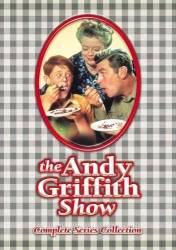Revealing mistake: While Goober is up in the tree with the fake owl, when Andy and the Darlings leave the house they are standing on the porch, and after seeing the 'second omen' the Darlings leave the porch and head to their pickup truck, but what's funny is that we can see their reflections in the window behind Andy as they all walk off camera, turn around and just stand there, and we can still see those actors' reflections in the shots facing Andy and Aunt Bee even as the Darlings supposedly drive off.
Revealing mistake: During the scenes with Opie and Dolly in Walt's barn, the horse is wearing a halter with a ring under the adjustable chinstrap, and in every closeup a thin wire (like picture wire) can be seen attached to the ring as it's being pulled from offscreen to have Dolly turn her head away from Opie. Then later when Walt returns and tries to feed Dolly, once again a thin wire attached to Dolly's halter is pulled from offscreen, so she will turn her head away from Walt. (00:05:55 - 00:18:20)







Answer: In S3 x E11 Convicts-at-Large, there is a character named Big Maude Tyler, who is the leader of three female escaped convicts. Andy listens to the radio as the news announcer says that Big Maude's aliases include Clarice or Annabelle Tyler and also one amusingly named Ralph Henderson.
Super Grover ★